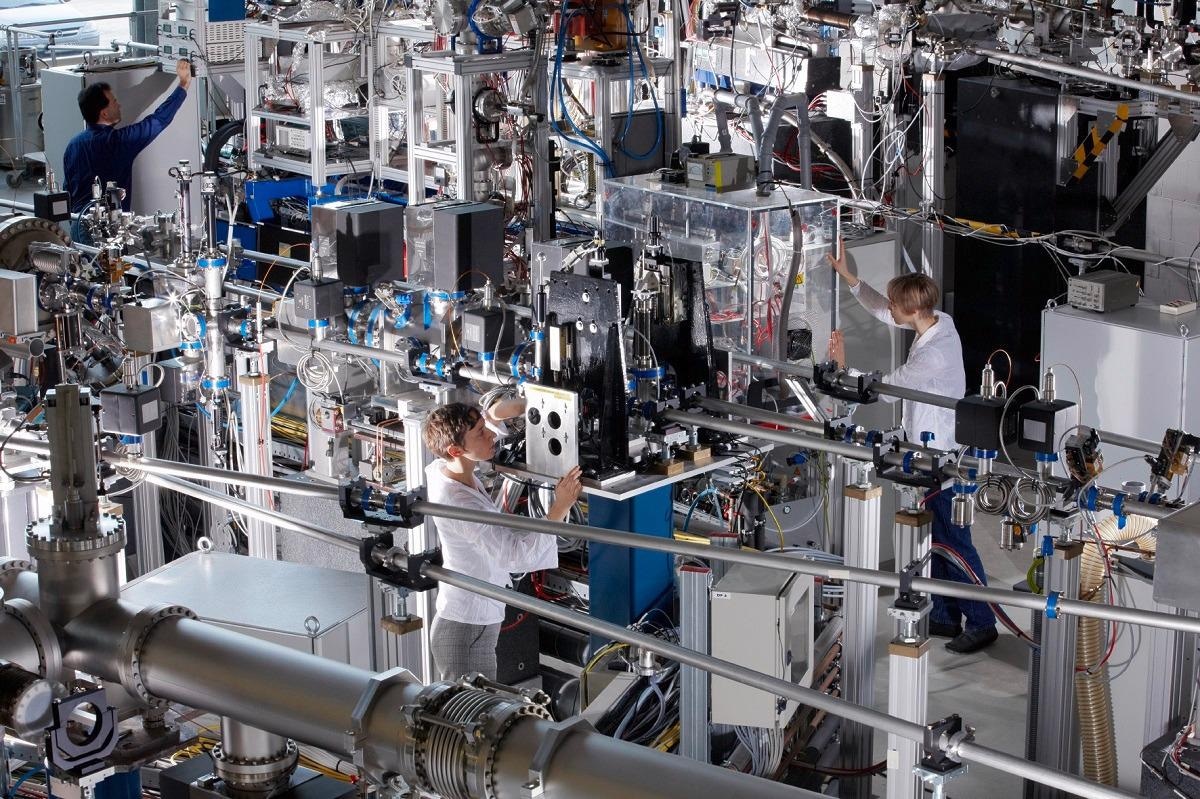Mar 3 2021
For the first time, physicists from Tu Bergakademie Freiberg (TU Freiberg) have used a new technique to analyze the processes in a model system, such as an organic solar cell, at the femtosecond scale. This discovery can be used to design efficient and high-performance solar cells.
 In the FLASH I experimental hall “Albert Einstein”. Image Credit: DESY/Heiner Müller-Elsner.
In the FLASH I experimental hall “Albert Einstein”. Image Credit: DESY/Heiner Müller-Elsner.
The study was performed in association with scientists from Berkeley and Hamburg.
The key lies in the ultra-fast flashes of light, with which the researchers headed by Dr Friedrich Roth works at FLASH in Hamburg—the world’s first-ever free-electron laser in the X-ray region.
We took advantage of the special properties of this X-ray source and expanded them with time-resolved X-ray photoemission spectroscopy (TR-XPS). This method is based on the external photoelectric effect, for the explanation of which Albert Einstein received the Nobel Prize in Physics in 1921.
Dr Friedrich Roth, Institute of Experimental Physics, TU Bergakademie Freiberg
Dr Roth continued, “For the first time, we were able to directly analyze the specific charge separation and subsequent processes when light hits a model system such as an organic solar cell. We were also able to determine the efficiency of the charge separation in real-time.”
With Photon Science to Better Solar Cells
Unlike the earlier techniques, the investigators were able to detect a formerly unseen channel for charge separation.
“With our measurement method, we can carry out a time-resolved, atom-specific analysis. This gives us a fingerprint that can be assigned to the associated molecule. We can see when the electrons energized by the optical laser arrive at the acceptor molecule, how long they stay and when or how they disappear again,” stated Professor Serguei Molodtsov, describing the measurement technique.
Professor Molodtsov heads the research team “Structural Research with X-ray Free Electron Lasers (XFELs) and Synchrotron Radiation” at the Freiberg Institute of Experimental Physics. He is also the Scientific Director at the European X-ray Free Electron Laser (EuXFEL).
Analyze Weak Points and Increase Quantum Efficiency
Real-time analyses, as well as the measurement of internal parameters, are significant aspects of fundamental research that can particularly benefit the solar sector.
With our measurements, we draw important conclusions about the interfaces at which free charge carriers are formed or lost and thus weaken the performance of solar cells.
Dr Friedrich Roth, Institute of Experimental Physics, TU Bergakademie Freiberg
With the discoveries made by the Freiberg team, for instance, optimization possibilities in the field of materials science or at the molecular level can now be derived, and quantum efficiency can improve the recently emerging photocatalytic and photovoltaic systems.
The quantum efficiency explains the ratio of the incident light to the stream of photons (current that is produced). The researchers have published the results of their study in a current specialist publication—the Nature Communications journal.
X-Ray Laser Research at TU Bergakademie Freiberg
At TU Freiberg, materials research using XFELs has been pushed forward for more than seven years. Since 2018, there has been a bilateral cooperation contract with the European XFEL based in Schenefeld near Hamburg—the world’s largest X-ray laser. Since 2017, it has provided whole new research opportunities for both industry and science.
In an exclusive series of lectures titled “Materials research with free-electron X-ray lasers (XFELs),” Freiberg students also gained a better understanding of the application and structure of the next-generation X-ray light sources and their multipurpose application opportunities in materials research.
Journal Reference:
Roth, F., et al. (2021) Direct observation of charge separation in an organic light harvesting system by femtosecond time-resolved XPS. Nature Communications. doi.org/10.1038/s41467-021-21454-3.